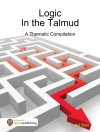In How Chiefs Became Kings, Patrick Vinton Kirch addresses a central problem in anthropological archaeology: the emergence of ‘archaic states’ whose distinctive feature was divine kingship. Kirch takes as his focus the Hawaiian archipelago, commonly regarded as the archetype of a complex chiefdom. Integrating anthropology, linguistics, archaeology, traditional history, and theory, and drawing on significant contributions from his own four decades of research, Kirch argues that Hawaiian polities had become states before the time of Captain Cook’s voyage (1778-1779). The status of most archaic states is inferred from the archaeological record. But Kirch shows that because Hawai`i’s kingdoms were established relatively recently, they could be observed and recorded by Cook and other European voyagers. Substantive and provocative, this book makes a major contribution to the literature of precontact Hawai`i and illuminates Hawai`i’s importance in the global theory and literature about divine kingship, archaic states, and sociopolitical evolution.
Daftar Isi
Contents
Preface
1. From Chiefdom to Archaic State: Hawai‘i in Comparative and Historical Context
What Are Archaic States?
Theories of Primary State Formation
Hawai‘i as a Model System for State Emergence
Marshall Sahlins’s Challenge
A Phylogenetic Model for Polynesian
Cultural Evolution
The Nature of Ancestral Polynesian Society
How Did Contact-Era Hawai‘i Differ from
Ancestral Polynesia?
Was Hawai‘i Unique in Polynesia?
2. Hawaiian Archaic States on the Eve of European Contact
Sources for Reconstructing Contact-Era Hawai‘i
Hawaiian Polities: Size and Scale
Class Stratifi cation and Divine Kingship
Elite Art, Craft Specialization, and Wealth Finance
Political, Administrative, and Settlement Hierarchies
Systems of Production
The Hierarchy of Priests and Temples
The State Cults and the Ritual Cycle
Land and Labor
War
Summary
3. Native Hawaiian Political History
Genealogies of Renown, Traditions of Power
Founding Traditions of Settlement and Voyaging
Political Developments of the Fifteenth to
Mid-sixteenth Centuries
Usurpation and Political Consolidation in the Hawai‘i
and Maui Kingdoms
Dynastic Histories of the Seventeenth to
Eighteenth Centuries
Political Developments of the Contact Era
Agency in History: Ali‘i Routes to Power
4. Tracking the Transformations: Population, Intensification, and Monumentality
The Hawaiian Cultural Sequence
Population and Demographic Trends
Contrastive Agroecosystems
Temporal Pathways of Intensifi cation
Marine Resources and Aquaculture
Monumentality and the Temple System
Royal Centers and Elite Residence Patterns
When Did the Hawaiian Archaic States Emerge?
5. The Challenge of Explanation
Previous Explanations for Hawaiian Cultural Change
Ultimate Causation: Population, Intensifi cation, and Surplus
Proximate Causation: Status Rivalry, Alliance, and Conquest
Why Did Archaic States Emerge First on Hawai‘i and Maui?
Hawai‘i and Archaic State Emergence
Notes
Glossary of Hawaiian Terms
References
Index
Tentang Penulis
Patrick Vinton Kirch is Class of 1954 Professor of Anthropology and Integrative Biology at the University of California, Berkeley. He is the author of many books, including Feathered Gods and Fishhooks and On the Road of the Winds (UC Press).












